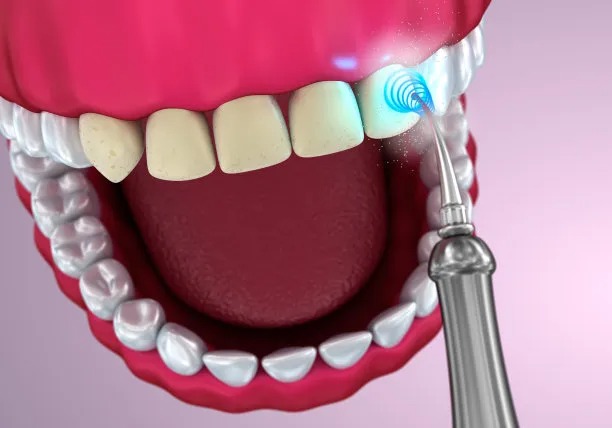Understanding the Process and Importance of Extracting a Tooth for Oral Health and Wellbeing
Summary: Tooth extraction is a crucial procedure in dental care that significantly impacts oral health and overall wellbeing. This article delves into the reasoning behind tooth extraction, the step-by-step process involved, the potential complications that might arise, and the importance of post-extraction care. By understanding these dimensions, patients can make informed decisions and prioritize their oral health. Effective communication with dental professionals and adherence to aftercare guidelines are vital to ensure optimal recovery. Ultimately, this comprehensive exploration aims to emphasize that tooth extraction, although sometimes daunting, is often necessary for long-term oral wellbeing.
1. Reasons for Tooth Extraction Procedures

Tooth extraction may be needed for several reasons, with the most common being decay, disease, and overcrowding. Tooth decay can compromise the integrity of a tooth, leading to infections that risk neighboring teeth. In such instances, removing the affected tooth is often necessary to prevent the infection from spreading. When a tooth is too decayed, restoration might not be feasible, making extraction a better alternative.
Another prevalent reason for tooth extraction is periodontal disease, which affects the gums and, if left untreated, can lead to tooth loss. When the disease reaches advanced stages, the supporting structures of the tooth can weaken, necessitating extraction to preserve overall oral health. Hence, being proactive about gum disease can help individuals avoid more extreme measures later.
Crowding is another common indication for tooth extraction, especially before orthodontic treatment. In many cases, there isnt enough space in the mouth for all the teeth, leading to misalignment. Extracting a few teeth can create the necessary space, allowing for the proper alignment and positioning of the remaining teeth.
2. The Step-by-Step Process of Tooth Extraction
The tooth extraction process begins with a thorough examination by a dental professional, who may employ X-rays to assess the tooths root structure and surrounding bone. Understanding the intricacies of an individuals oral anatomy ensures that the extraction is performed safely and effectively. Following the examination, the dentist discusses the procedure and addresses any concerns the patient may have.
Once both parties are ready, the dentist administers anesthesia to ensure the patient remains comfortable throughout the procedure. Depending on the complexity of the extraction, either local anesthesia or sedation may be used. This step is crucial in minimizing pain and anxiety, allowing for a smoother experience for the patient.
During the actual extraction, the dentist uses specialized tools to loosen the tooth and gently remove it from its socket. For more complicated cases, such as impacted wisdom teeth, surgical methods may be required. After the tooth is extracted, the dentist provides instructions for care and informs the patient about what to expect during recovery. This transparency helps prepare the patient for the next steps.
3. Potential Complications from Tooth Extraction
Although tooth extraction is generally safe, complications can arise, making awareness essential. One of the more common issues is dry socket, which occurs when the blood clot protecting the extraction site becomes dislodged, exposing the bone underneath. This condition can lead to severe pain and delays in healing. To mitigate this risk, following post-operative care instructions is crucial.
Another potential complication is infection, which can develop if bacteria enter the extraction site. Signs of infection include swelling, fever, and persistent pain. If an infection occurs, contacting a dentist promptly for evaluation and treatment is vital to avoid further complications.
Lastly, there can be damage to surrounding teeth or jawbone during the extraction process. While dental professionals take precautions to minimize this risk, it is imperative for patients to communicate any discomfort or unusual symptoms following the procedure. By staying informed and alert, patients can contribute to their recovery process and overall health.
4. Importance of Post-Extraction Care
Post-extraction care plays a pivotal role in ensuring a smooth recovery. Following the dentists recommendations for oral hygiene is vital, which typically involves avoiding certain foods and maintaining a gentle brushing routine. Keeping the mouth clean helps prevent infection and promotes healing in the extraction area.
Additionally, managing pain and swelling is essential in the initial days after extraction. Dentists often recommend ice packs and over-the-counter pain medications to alleviate discomfort. Understanding the importance of these methods can greatly enhance patient comfort during recovery.
Finally, attending follow-up appointments is crucial to monitor healing and address any concerns that may arise. This proactive approach can help catch potential issues early, ensuring a successful recovery and preserving overall oral health.
Summary: Understanding the process and significance of tooth extraction enhances patient awareness and readiness for dental care. By grasping the reasons behind the procedure, the method of extraction, potential complications, and the necessity of post-care, patients can navigate the journey with confidence. Embracing these aspects emphasizes the importance of maintaining oral health for wellbeing.
This article is compiled by Vickong Dental and the content is for reference only.



